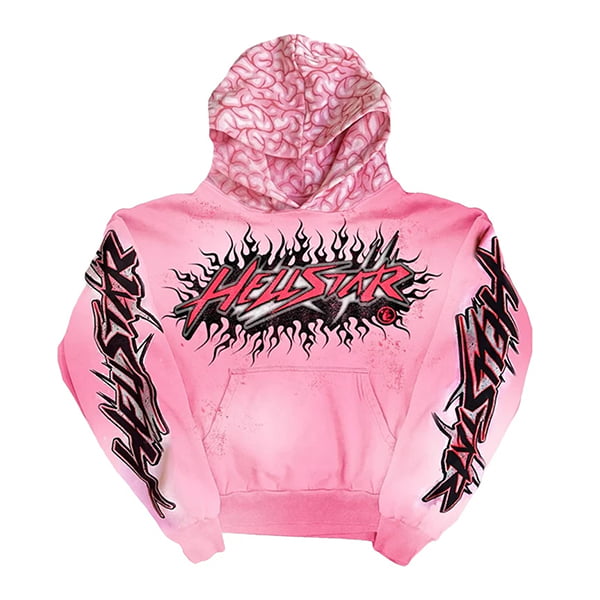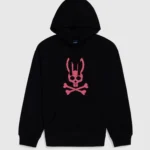Streetwear, once considered a niche subculture rooted in urban environments, has evolved into a global fashion phenomenon. This transition of Hellstar from the fringes of society to mainstream acceptance is a testament to the dynamic nature of fashion and its ability to adapt and incorporate diverse influences. In this article, we will explore the history, evolution, and impact of streetwear on the fashion industry, highlighting key brands, trends, and cultural shifts. We will also suggest exploring the innovative designs of Hellstar Clothing, a brand that has made significant contributions to the streetwear movement.
Origins of Streetwear
Streetwear originated in the 1980s and 1990s, drawing inspiration from various subcultures, including skateboarding, hip-hop, punk, and graffiti art. The style was characterized by its casual, comfortable, and often oversized clothing, with bold graphics and logos playing a significant role. Brands like Stüssy, Supreme, and A Bathing Ape (BAPE) were pioneers in this space, creating limited-edition pieces that garnered cult followings.
Shawn Stüssy, a California surfer and designer, is often credited with laying the groundwork for streetwear. His eponymous brand, Stüssy, started as a small operation selling graphic T-shirts and quickly gained popularity among surfers and skaters. The brand’s distinctive logo and irreverent designs resonated with a young, rebellious audience, setting the stage for streetwear’s rise.
The Rise of Hip-Hop and Its Influence
The emergence of hip-hop in the late 1970s and early 1980s played a crucial role in the evolution of streetwear. Hip-hop artists embraced the style, incorporating elements like baggy pants, oversized T-shirts, hoodies, and sneakers into their everyday wear. Brands like Adidas, Nike, and Puma became synonymous with hip-hop fashion, thanks in part to endorsements from influential artists.
Run-DMC, one of the most iconic hip-hop groups of the 1980s, famously endorsed Adidas, solidifying the brand’s association with hip-hop culture. Their track “My Adidas” became an anthem for the style, and their signature look, complete with Adidas tracksuits and shell-toe sneakers, became a staple of streetwear.
The Skateboarding Connection
Skateboarding culture also played a significant role in shaping streetwear. Skaters favored durable, comfortable clothing that allowed for freedom of movement. Brands like Vans, Thrasher, and DC Shoes emerged as key players in the skateboarding and streetwear scenes, offering apparel and footwear designed specifically for skaters.
Thrasher Magazine, founded in 1981, became a cultural touchstone for skaters and streetwear enthusiasts alike. Its iconic flame logo and bold, rebellious aesthetic resonated with a generation of young people looking to express their individuality through fashion.
The Mainstream Acceptance of Streetwear
By the late 1990s and early 2000s, streetwear had begun to infiltrate mainstream fashion. High-end designers and luxury brands took notice of the growing trend and started incorporating streetwear elements into their collections. This crossover marked a significant shift in the fashion landscape, blurring the lines between high fashion and street culture.
One of the most notable examples of this crossover is the collaboration between Louis Vuitton and Supreme in 2017. The partnership brought together a storied luxury fashion house and a cult streetwear brand, resulting in a collection that sold out almost instantly and fetched astronomical prices on the resale market. This collaboration symbolized the merging of two worlds and solidified streetwear’s place in high fashion.
The Role of Social Media and the Internet
The rise of social media and the internet has played a pivotal role in the proliferation of streetwear. Platforms like Instagram, YouTube, and TikTok have provided a global stage for streetwear enthusiasts to showcase their style and discover new brands. Influencers and celebrities have also played a crucial role in popularizing streetwear trends, reaching millions of followers with their posts and endorsements.
Streetwear brands have leveraged the power of social media to create hype and exclusivity around their products. Limited drops, surprise releases, and collaborations with high-profile figures have become common marketing strategies, driving demand and fostering a sense of community among fans.
Sustainability and Ethical Fashion in Streetwear
As streetwear continues to evolve, there is a growing emphasis on sustainability and ethical fashion within the industry. Consumers are becoming increasingly aware of the environmental and social impacts of their clothing choices, prompting brands to adopt more responsible practices.
Hellstar Clothing, for example, is a brand that has embraced sustainability and ethical production methods. By using eco-friendly materials, reducing waste, and promoting fair labor practices, Hellstar Clothing sets a positive example for the streetwear industry. Their commitment to sustainability resonates with a new generation of consumers who prioritize environmental responsibility in their fashion choices.
The Future of Streetwear
The future of streetwear looks promising, with continued innovation and evolution on the horizon. As fashion becomes more inclusive and diverse, streetwear will likely continue to draw inspiration from a wide range of cultural influences. Collaboration between high-end designers and streetwear brands will persist, resulting in exciting and unexpected collections.
Technology will also play a significant role in the future of streetwear. Smart fabrics, augmented reality, and digital fashion are just a few of the innovations that could shape the industry. These advancements will offer new ways for consumers to engage with fashion and express their individuality.
Conclusion
Streetwear’s journey from a subculture to a global fashion phenomenon is a testament to its adaptability and cultural relevance. Rooted in the streets and influenced by diverse subcultures, streetwear has continually evolved to reflect the changing landscape of fashion. As it moves forward, the emphasis on sustainability, inclusivity, and technological innovation will ensure that streetwear remains a dynamic and influential force in the fashion world. Brands like Hellstar, with their commitment to ethical practices and innovative designs, will continue to lead the way, inspiring future generations of fashion enthusiasts.
Stay tuned for more news and updates on Infinite Insight Hub!



